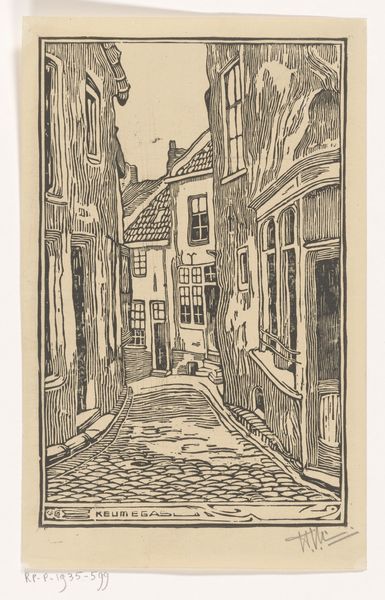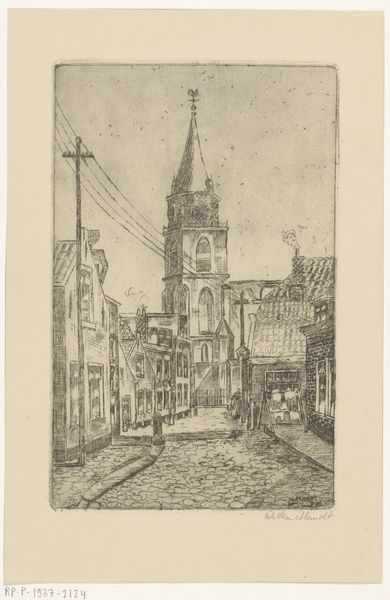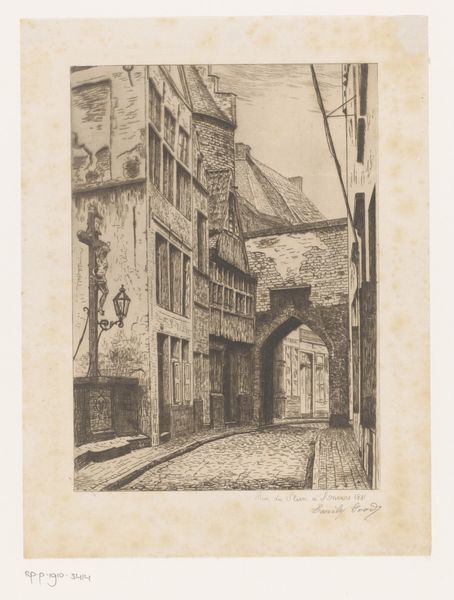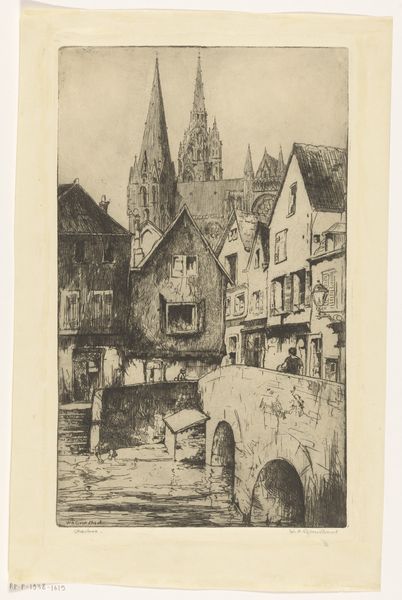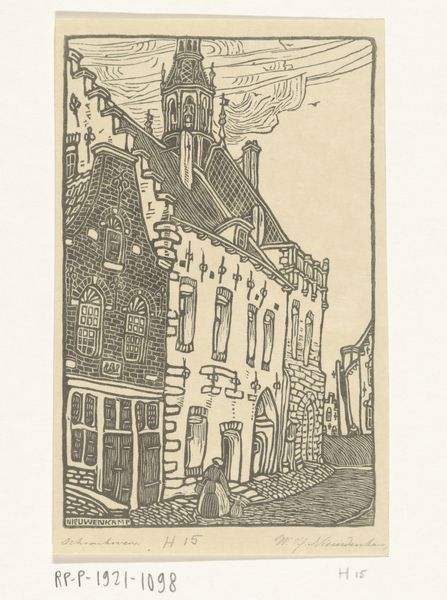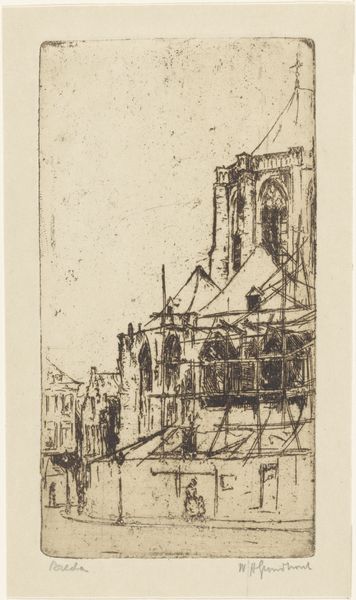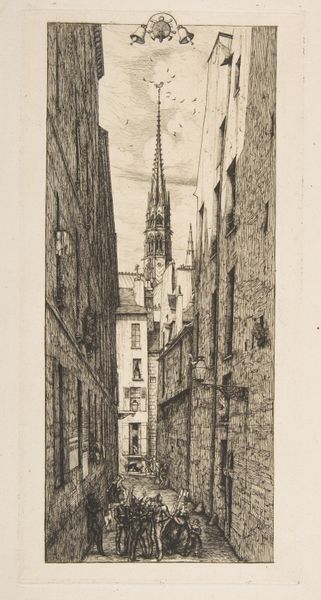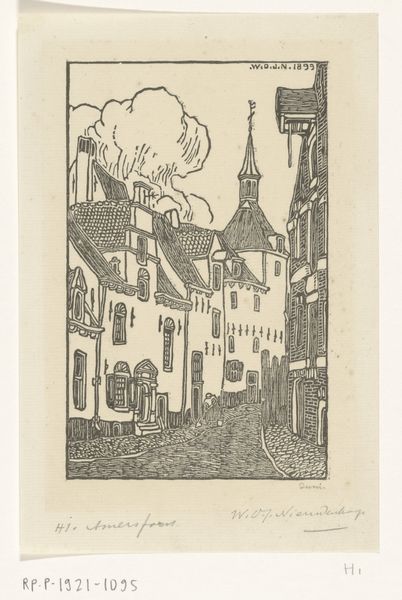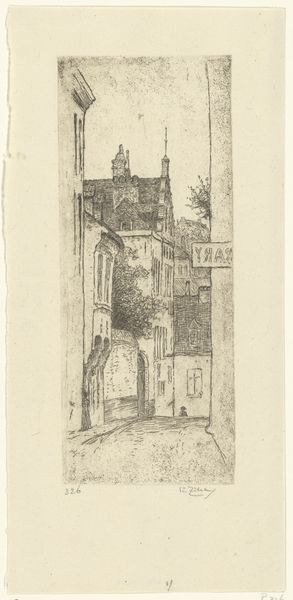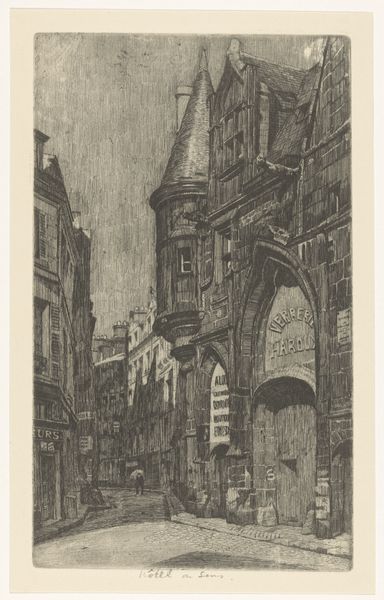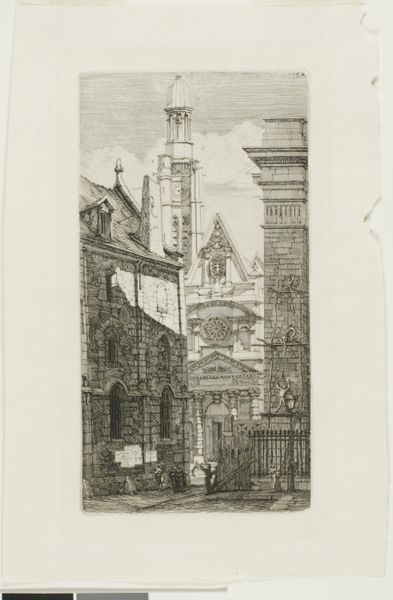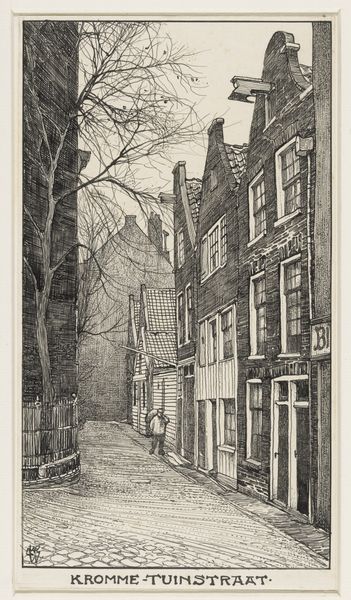
print, woodcut
# print
#
landscape
#
woodcut
#
street
Dimensions: height 245 mm, width 183 mm
Copyright: Rijks Museum: Open Domain
Editor: This is Cornelia van Maanen's woodcut print, "Street View with Church," created sometime between 1910 and 1936. The sharp contrast between black and white gives it such a stark, graphic feel. I'm really struck by how imposing the church feels looming over everything. What do you see in this piece? Curator: The high contrast, as you noticed, does draw attention to the dialectic tension present. The church looms indeed, but notice how its solidity and permanence are juxtaposed against the organic, almost chaotic lines of the cobblestone street. This echoes a larger tension, perhaps, between the enduring nature of religious institutions and the ever-shifting realities of daily life. Consider, too, the weight we give certain symbols: the church representing not only faith but also community, history, and perhaps even power. Do you see other symbols at play here? Editor: Well, the houses look very typical and simple. But is there anything else in their shape or arrangement that might carry extra weight? Curator: Their verticality, echoing the church's height, suggests ambition and striving. However, their closeness hints at a society reliant on interpersonal connection. Notice also the lack of figures, creating a stage set where viewers can easily imagine their own presence. How might your reading of this artwork change if we populated this street with people? Editor: That's a great question! I think it might give it more context but make it more specific, which could limit the overall effect. Thinking about the interplay between the buildings and the road like you've described really deepens my understanding of the print! Curator: Precisely! By examining the symbolic relationships within the artwork, we begin to uncover its multifaceted narrative. I appreciate you walking this path of discovery with me.
Comments
No comments
Be the first to comment and join the conversation on the ultimate creative platform.
